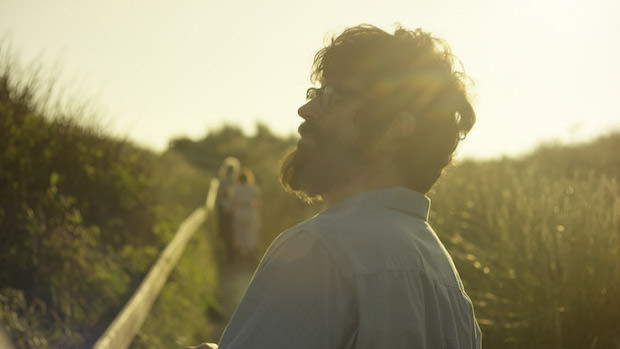 Back to selection
Back to selection
“What it’s Like to Lose One’s Sight”: DP Gerry Floyd on Notes on Blindness
 Notes on Blindness
Notes on Blindness An entry in the New Frontier program at Sundance 2016, Notes on Blindness began in 2013 as a four-minute short from writer/directors Pete Middleton and James Spinney. The film attempted to capture the sensory experience of blindness through the audio diary of John Hull, a writer and theologian who had lost his sight. The following year, Middleton and Spinney adapted Notes on Blindness into a longer New York Times Op-Doc. Now, they have adapted this story to a feature length. Below, Notes on Blindness DP Gerry Floyd speaks to how he and the directors sought to offer a “sensory insight” into blindness.
Filmmaker: How and why did you wind up being the cinematographer of your film? What were the factors and attributes that led to your being hired for this job?
Floyd: I had worked with James and Pete on both the short Notes on Blindness – Rainfall and the subsequent New York Times Op-Docs Notes on Blindness short and was delighted to be asked to shoot the feature version.
Filmmaker: What were your artistic goals on this film, and how did you realize them? How did you want your cinematography to enhance the film’s storytelling and treatment of its characters?
Floyd: We were trying to make a film which would give the viewer a sensory insight, both visual and aural, into what it’s like to lose one’s sight. Trying to push concepts of “light” and “dark” and “whose point of view” were central to our approach. Extreme close ups were also used to emphasize a heightened sensory awareness.
Filmmaker: Were there any specific influences on your cinematography, whether they be other films, or visual art, of photography, or something else?
Floyd: The films of Andrei Tarkovsky, particularly the earlier films – Solaris, Mirror and Stalker – were something of a touchstone for me.
Filmmaker: What were the biggest challenges posed by production to those goals?
Floyd: We had a number of scenes which involved managing large quantities of water which were expensive and required careful design and planning.
Filmmaker: What camera did you shoot on? Why did you choose the camera that you did? What lenses did you use?
Floyd: We shot on a RED Epic Dragon and were fortunate that Archer’s Mark, the production company, owned one! We used Bausch and Lomb Super Baltar lenses.
Filmmaker: Describe your approach to lighting.
Floyd: On location we were as small and compact as possible, frequently using available light. In the studio we wanted to create a somewhat warmer, intimate feel.
Filmmaker: What was the most difficult scene to realize and why? And how did you do it?
Floyd: Sometimes I think the most difficult scenes or shots in films can appear the easiest to shoot, but perhaps the most difficult scene in Notes on Blindness was the rainfall scene in the studio for the reasons mentioned above. It was also the most rewarding and exciting to shoot!
Filmmaker: Finally, describe the finishing of the film. How much of your look was “baked in” versus realized in the DI?
Floyd: Unfortunately I couldn’t be around for the final grading of the film, but we had generally decided on certain “looks” for different strands within the film whilst shooting. This gave a good idea to the colorist of which way to go in post.
- Camera: RED Epic Dragon
- Lenses: Bausch & Lomb Super Baltars
- Lighting: Location – available light and HMI, studio – tungsten
- Color Grading: Baselight
